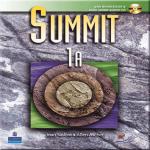|
آموزش TopNotch و Summit با فهیمه فنایی و زبان آموزان خانه جوان اصفهان
Discourse Strategies
A: The rest of the group couldn’t hear my shouts!
A: And I had forgotten to tell anyone where I was going.
Student B begins Summit 1 Unit 10 جمعه 3 خرداد 1392برچسب:, :: 11:36 :: نويسنده : Zoleikha AliOmran
Discourse Strategies
Expressing frustration
Disagreeing
Summit 1 Unit 9 جمعه 3 خرداد 1392برچسب:, :: 11:29 :: نويسنده : Zoleikha AliOmran Discourse Strategies
Summit 1 Unit 8 جمعه 3 خرداد 1392برچسب:, :: 11:27 :: نويسنده : Zoleikha AliOmran Discourse Strategies Summit 1 Unit 7 جمعه 3 خرداد 1392برچسب:, :: 11:23 :: نويسنده : Zoleikha AliOmran Discourse Strategies Summit 1 Unit 6 جمعه 3 خرداد 1392برچسب:, :: 11:19 :: نويسنده : Zoleikha AliOmran Discourse Strategies
A: _____ so many poor homeless people Student B begins , Student A responds
B: _____ so many people are still getting HIV
Summit 1 Unit 5 جمعه 3 خرداد 1392برچسب:, :: 11:1 :: نويسنده : Zoleikha AliOmran Discourse Strategies Disagreeing Summit 1 Unit 4 پنج شنبه 2 خرداد 1392برچسب:, :: 13:10 :: نويسنده : Zoleikha AliOmran Discourse Strategies (Unit 3, page 35)
Asking for and giving reasons
A . Use these expressions to ask for and give reasons for opinions in a discussion. Asking for reasons will help you understand your partner’s point of view. Practice saying each.
Asking for reasons
Why do you say that ?
What makes you say that ? How come you think that ?
Giving reasons I say that because . . . From what I can see . . . Well, in my experience . . .
B. Pair Work . Take turns using the prompts below to express your own opinions as conversation starters. Ask for and give reasons for your opinions.
I think our newspapers . . . do a great job reporting the news. do a poor job reporting the news.
In general, I think deep down most people are basically . . . selfish and greedy. giving and generous.
In my opinion, taxes should be . . . reduced and people should use their own money to take care of themselves. spent to help those in need.
In general, I think crime is . . . on the rise. on the decline.
Basically, I think politicians . . . care deeply about serving people. are just in politics to serve themselves.
Overall, I think our education system is . . . excellent. getting better in need of major improvements.
Generally, I believe most charities . . . do an excellent job. spend too much money on advertising and administration.
I think the medical care in our country is . . . excellent. getting better. in need of major improvements.
In general, I think art museums are . . . pretty useless. really important.
Your own idea:
C . Now practice asking for and giving reasons as you do the Discussion Builder activities on page 35.
Summit 1 Unit 3 Copyright © 2006 by Pearson Education. Permission granted to reproduce for classroom use. پنج شنبه 19 ارديبهشت 1392برچسب:, :: 11:35 :: نويسنده : Zoleikha AliOmran Discourse Strategies There’s a lot of exciting new music these days. There are some really annoying shows on TV these days. There are some good restaurants around here. There have been some interesting stories in the news recently. I’ve seen some great movies recently. There are some great museums in this town. There are some great shows on TV these days. There have been some depressing stories in the news lately. There are a number of interesting things to do in this neighborhood. I’ve read some really good books lately. There are some nice shops downtown. Your own idea:
پنج شنبه 19 ارديبهشت 1392برچسب:, :: 11:9 :: نويسنده : Zoleikha AliOmran Discourse Strategies (Unit 1, page 11)
Showing surprise ( falling intonation)
No! Wow! Amazing
Conversation 1
Conversation 2
Summit 1 Unit 1 پنج شنبه 19 ارديبهشت 1392برچسب:, :: 10:55 :: نويسنده : Zoleikha AliOmran صفحه قبل 1 صفحه بعد درباره وبلاگ  به وبلاگ ما خوش آمدید. در این جا شما می توانید نکان مهم دوره های آموزشی زبان انگلیسی را مشاهده نمایید . فهیمه فنایی از دبیران باسابقه تصمیم به ایجاد و به روزرسانی هرروز این وبلاگ گرفته تا بر اساس آن بتوان گام دیگری در جهت اهداف آموزش زبان انگلیسی به علاقمندان بردارد. اینجانب (زلیخا علی عمران) افتخار مدیریت وبلاگ و همکاری در زمینه های نویسندگی و ویرایش مطالب در وبلاگ ایشان را دارا می باشم . امید است که مورد رضایت بازدیدکنندگان محترم باشد. لطفا نظرات و پیشنهادات خود را برایمان بنویسید تا برای بهبود هر چه بیشتر وبلاگ از آن استفاده کنیم. آخرین مطالب پيوندها
نويسندگان |
||
|
|